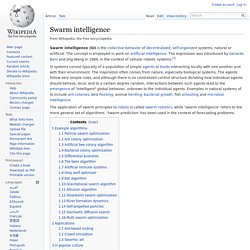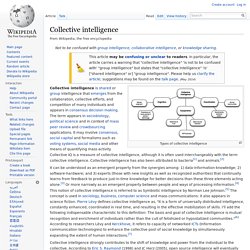

Hundredth monkey effect. The hundredth monkey effect is a studied phenomenon[1] in which a new behavior or idea is claimed to spread rapidly by unexplained, even supernatural, means from one group to all related groups once a critical number of members of one group exhibit the new behavior or acknowledge the new idea.

The theory behind this phenomenon originated with Lawrence Blair and Lyall Watson in the mid-to-late 1970s, who claimed that it was the observation of Japanese scientists. One of the primary factors in the promulgation of the story is that many authors quote secondary, tertiary or post-tertiary sources who have themselves misrepresented the original observations.[1] Popularisation of the effect[edit] The story of the hundredth monkey effect was published in Lyall Watson's foreword to Lawrence Blair's Rhythms of Vision in 1975,[2] and spread with the appearance of Watson's 1979 book Lifetide.
This story was further popularised by Ken Keyes, Jr. with the publication of his book The Hundredth Monkey. Swarm intelligence. Swarm intelligence (SI) is the collective behavior of decentralized, self-organized systems, natural or artificial.

The concept is employed in work on artificial intelligence. The expression was introduced by Gerardo Beni and Jing Wang in 1989, in the context of cellular robotic systems.[1] The application of swarm principles to robots is called swarm robotics, while 'swarm intelligence' refers to the more general set of algorithms. 'Swarm prediction' has been used in the context of forecasting problems. Example algorithms[edit] Particle swarm optimization[edit] Ant colony optimization[edit] Artificial bee colony algorithm[edit] Artificial bee colony algorithm (ABC) is a meta-heuristic algorithm introduced by Karaboga in 2005,[5] and simulates the foraging behaviour of honey bees. Bacterial colony optimization[edit] Differential evolution[edit] Differential evolution is similar to genetic algorithm and pattern search. Collective intelligence.
Types of collective intelligence Collective intelligence is shared or group intelligence that emerges from the collaboration, collective efforts, and competition of many individuals and appears in consensus decision making.

The term appears in sociobiology, political science and in context of mass peer review and crowdsourcing applications. It may involve consensus, social capital and formalisms such as voting systems, social media and other means of quantifying mass activity. Collective IQ is a measure of collective intelligence, although it is often used interchangeably with the term collective intelligence. Collective intelligence has also been attributed to bacteria[1] and animals.[2] Collective intelligence strongly contributes to the shift of knowledge and power from the individual to the collective.
History[edit] Self-organization. Self-organization occurs in a variety of physical, chemical, biological, robotic, social and cognitive systems.

Common examples include crystallization, the emergence of convection patterns in a liquid heated from below, chemical oscillators, swarming in groups of animals, and the way neural networks learn to recognize complex patterns. Overview[edit] The most robust and unambiguous examples[1] of self-organizing systems are from the physics of non-equilibrium processes. Self-organization is also relevant in chemistry, where it has often been taken as being synonymous with self-assembly. The concept of self-organization is central to the description of biological systems, from the subcellular to the ecosystem level. Self-organization usually relies on three basic ingredients:[3] Strong dynamical non-linearity, often though not necessarily involving positive and negative feedbackBalance of exploitation and explorationMultiple interactions Principles of self-organization[edit]